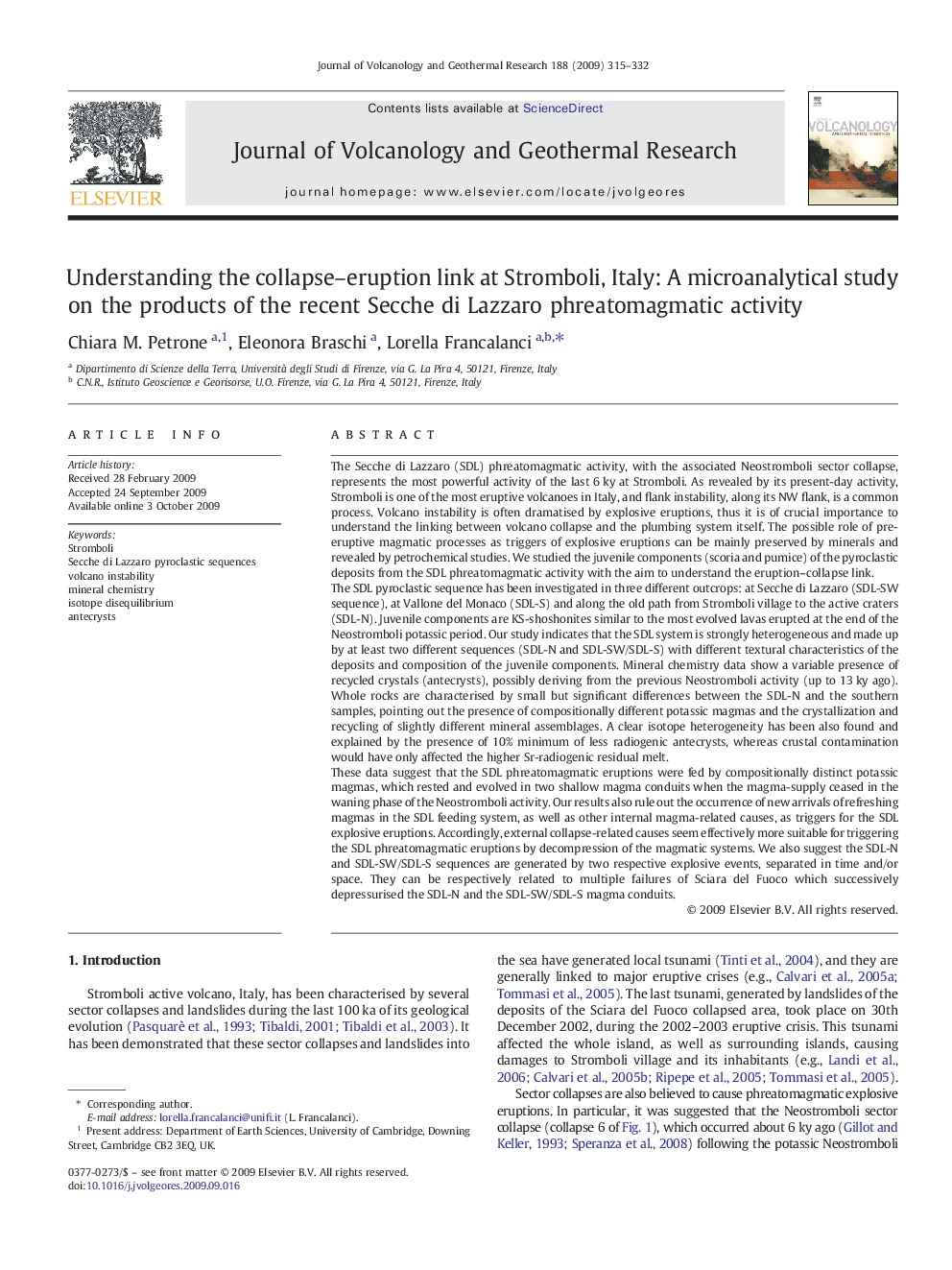| کد مقاله | کد نشریه | سال انتشار | مقاله انگلیسی | نسخه تمام متن |
|---|---|---|---|---|
| 4713136 | 1353859 | 2009 | 18 صفحه PDF | دانلود رایگان |

The Secche di Lazzaro (SDL) phreatomagmatic activity, with the associated Neostromboli sector collapse, represents the most powerful activity of the last 6 ky at Stromboli. As revealed by its present-day activity, Stromboli is one of the most eruptive volcanoes in Italy, and flank instability, along its NW flank, is a common process. Volcano instability is often dramatised by explosive eruptions, thus it is of crucial importance to understand the linking between volcano collapse and the plumbing system itself. The possible role of pre-eruptive magmatic processes as triggers of explosive eruptions can be mainly preserved by minerals and revealed by petrochemical studies. We studied the juvenile components (scoria and pumice) of the pyroclastic deposits from the SDL phreatomagmatic activity with the aim to understand the eruption–collapse link.The SDL pyroclastic sequence has been investigated in three different outcrops: at Secche di Lazzaro (SDL-SW sequence), at Vallone del Monaco (SDL-S) and along the old path from Stromboli village to the active craters (SDL-N). Juvenile components are KS-shoshonites similar to the most evolved lavas erupted at the end of the Neostromboli potassic period. Our study indicates that the SDL system is strongly heterogeneous and made up by at least two different sequences (SDL-N and SDL-SW/SDL-S) with different textural characteristics of the deposits and composition of the juvenile components. Mineral chemistry data show a variable presence of recycled crystals (antecrysts), possibly deriving from the previous Neostromboli activity (up to 13 ky ago). Whole rocks are characterised by small but significant differences between the SDL-N and the southern samples, pointing out the presence of compositionally different potassic magmas and the crystallization and recycling of slightly different mineral assemblages. A clear isotope heterogeneity has been also found and explained by the presence of 10% minimum of less radiogenic antecrysts, whereas crustal contamination would have only affected the higher Sr-radiogenic residual melt.These data suggest that the SDL phreatomagmatic eruptions were fed by compositionally distinct potassic magmas, which rested and evolved in two shallow magma conduits when the magma-supply ceased in the waning phase of the Neostromboli activity. Our results also rule out the occurrence of new arrivals of refreshing magmas in the SDL feeding system, as well as other internal magma-related causes, as triggers for the SDL explosive eruptions. Accordingly, external collapse-related causes seem effectively more suitable for triggering the SDL phreatomagmatic eruptions by decompression of the magmatic systems. We also suggest the SDL-N and SDL-SW/SDL-S sequences are generated by two respective explosive events, separated in time and/or space. They can be respectively related to multiple failures of Sciara del Fuoco which successively depressurised the SDL-N and the SDL-SW/SDL-S magma conduits.
Journal: Journal of Volcanology and Geothermal Research - Volume 188, Issue 4, 15 December 2009, Pages 315–332